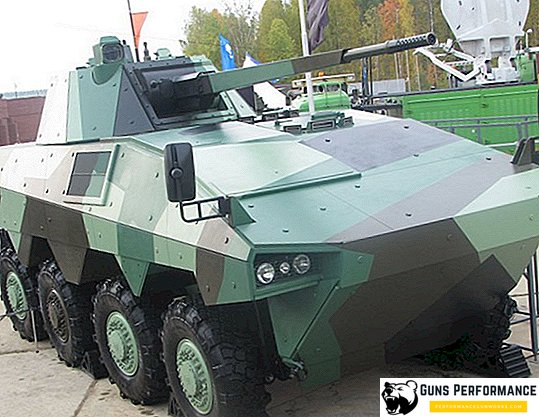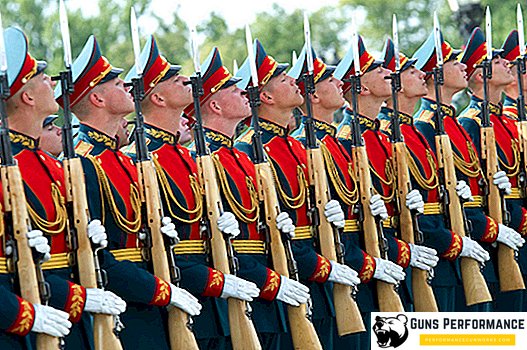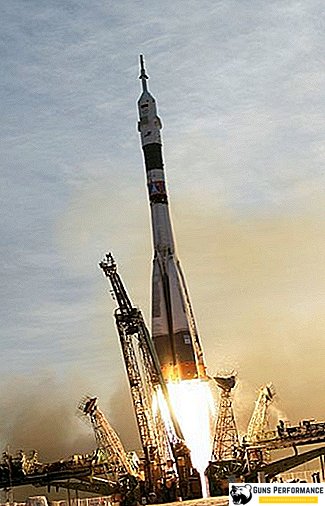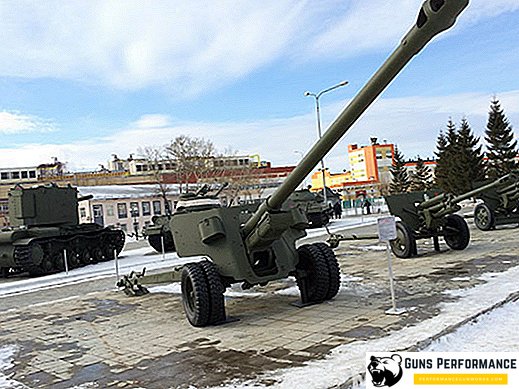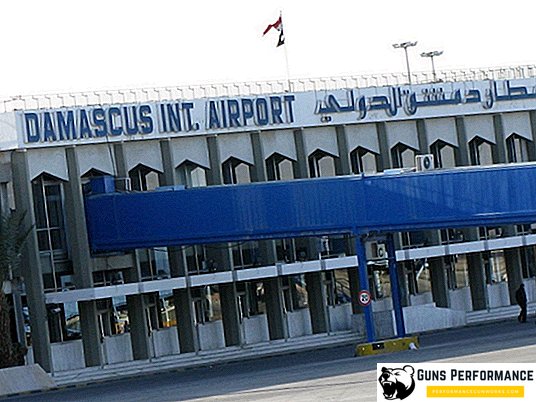Background conflict
The story of the origin of the conflict dates back to 1860, when China (then the Qing Empire) gave Russia extensive land in Central Asia and Primorye under the Aigun and Beijing Treaties.
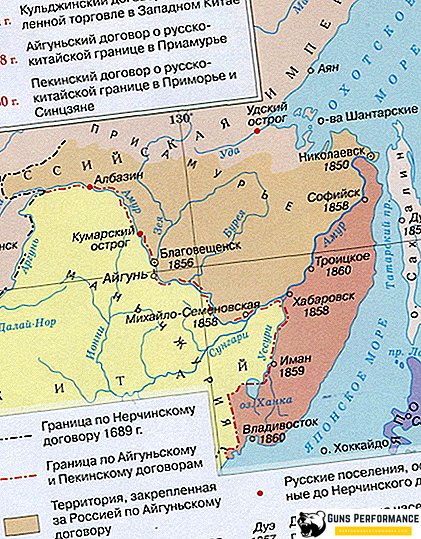
After World War II in the Far East, the USSR gained a very reliable and loyal ally in the form of the People's Republic of China. Soviet aid in the war with Japan 1937-1945 and in the civil war in China against the forces of the Kuomintang made the Chinese communists very loyal to the Soviet Union. The USSR, in turn, willingly used the benefits of the created strategic situation.
However, already in 1950, peace in the Far East was destroyed by the outbreak of war in Korea. This war was a logical consequence of the Cold War that began four years earlier. The desire of the two superpowers - the USSR and the USA - to unite the Korean Peninsula under the rule of a friendly regime led to bloodshed.
Initially, success was entirely on the side of communist Korea. Her troops managed to break the resistance of the small army of the South and rushed into the depths of South Korea. However, the forces of the United States and the UN soon came to the aid of the latter, as a result of which the offensive stopped. Already in the fall of 1950, a landing force was landed near the capital of the DPRK, the city of Seoul, and therefore the North Korean army began a hasty retreat. The war threatened to end with the defeat of the North as early as October 1950.

In this situation, the threat of the emergence of a capitalist and clearly not friendly state near the borders of China has increased as never before. The ghost of the civil war still hung over the PRC, so it was decided to intervene in the Korean war on the side of the communist forces.
As a result, China became an "unofficial" participant in the conflict, and the course of the war changed again. In a very short time, the front line again descended to the 38th parallel, which almost coincided with the demarcation line before the war. Here the front and stopped until the end of the conflict in 1953.
After the Korean War in Soviet-Chinese relations, China’s desire to get out of the "suzerainty" of the USSR to pursue its own, fully independent foreign policy became most noticeable. And the reason was not long in coming.
The gap between the USSR and China
In 1956, the XX Congress of the CPSU was held in Moscow. The outcome of it was the refusal of the Soviet leadership from the personality cult of Joseph Stalin and in fact the change in the country's foreign policy doctrine. In China, they closely followed these changes, but did not feel any excitement from them. In the end, Khrushchev and his staff were declared revisionists in China, and the leadership of the Chinese Communist Party abruptly changed the foreign policy of the state.
That period in China is called the beginning of the "war of ideas between China and the USSR." The Chinese leadership made a number of demands to the Soviet Union (for example, the annexation of Mongolia, the transfer of nuclear weapons, etc.) and at the same time tried to show the United States and other capitalist countries that China was no less opposed to the USSR than they were.
The gap between the Soviet Union and China has widened and deepened. In this connection, all the Soviet specialists who worked there were taken out of the PRC. In the higher echelons of the USSR, irritation grew over the foreign policy of the "Maoists" (as the followers of the policy of Mao Zedong were called). On the Chinese border, the Soviet leadership was forced to keep a very impressive grouping, aware of the unpredictability of the Chinese government.
In 1968, events occurred in Czechoslovakia, later called the Prague Spring. A change in the political course of the country's government led to the fact that already at the end of August of the same year, the Soviet leadership was forced to intervene in this process in order to avoid the beginning of the collapse of the Warsaw Pact. The troops of the USSR and other Warsaw Pact were introduced into Czechoslovakia.
The Chinese leadership condemned the actions of the Soviet side, as a result of which relations between the countries deteriorated to the maximum. But as it turned out, the worst was yet to come. By March 1969, the situation for the military conflict was completely overdue. It has been fueled by provocations from the Chinese side that have taken place in huge numbers since the early 1960s. Not only the Chinese military, but also peasants, who were demonstratively engaged in economic activity in front of the Soviet border guards, often entered the Soviet territory. Nevertheless, all violators were expelled back without using weapons.
By the end of the 1960s, full-fledged clashes with the participation of servicemen of both sides took place in the area of Damansky Island and on other parts of the Soviet-Chinese border. The scale and boldness of provocations grew steadily.
The Chinese leadership pursued goals not only and not so much a military victory as a clear demonstration to the US leadership, that China is an opponent of the USSR, and therefore can be, if not an ally, then at least a reliable partner of the United States.
Fighting March 2, 1969

On the night of March 1, 1969, a group of Chinese soldiers numbering from 70 to 80 people crossed the Ussuri River and landed on the western shore of Damansky Island. Up to 10:20 in the morning, the group remained unnoticed by the Soviet side, as a result of which Chinese soldiers had the opportunity to conduct a reconnaissance and plan further actions based on the situation.
At about 10.20 am on March 2, a Soviet observation post noticed a group of Chinese soldiers on Soviet territory. A group of border guards headed by the head of the 2nd outpost "Nizhne-Mikhaylovka" senior lieutenant I. Strelnikov left for the place of violation of the border of the USSR. Upon arrival on the island, the group split. The first part under the command of I. Strelnikov moved in the direction of the Chinese soldiers, who were standing on the ice at the southwestern tip of Damansky Island; another group, commanded by Sergeant V. Rabovich, moved along the coast of the island, cutting off a group of Chinese soldiers advancing deep into Damansky.

After about 5 minutes, Strelnikov’s group approached the Chinese servicemen. I. Strelnikov protested to them in connection with the violation of the state border of the USSR, but the Chinese in response suddenly opened fire. At the same time, another group of Chinese soldiers opened fire on V. Rabovich's group, as a result of which the Soviet border guards were caught off guard. In a fleeting battle, both Soviet groups were almost completely destroyed.
Shooting on the island was heard by the head of the neighboring 1st outpost "Kulebyaki Sopky" senior lieutenant V. Bubenin. He decided to advance with 23 soldiers on an armored troop-carrier in the direction of Damansky to help its neighbors. However, approaching the island, the group of senior lieutenant was forced to take up defense, because the Chinese troops launched an offensive in order to seize Damansky Island. Nevertheless, the Soviet soldiers courageously and stubbornly defended the territory, not allowing the enemy to throw them into the river.

Realizing that such a state of affairs could not continue for a long time, Senior Lieutenant Bubenin made a very brave decision, which in fact decided the outcome of the battles for Damansky Island on March 2. Its essence was to raid the rear of the Chinese group in order to disrupt it. On the BTR-60PB, V. Bubenin headed to the rear of the Chinese, rounding the northern part of Damansky Island, inflicting serious damage on the enemy. However, Bubenin’s BTR was soon shot down, as a result of which the commander decided to get to the dead BTR Lieutenant I. Strelnikov. This plan was a success, and soon V. Bubenin continued to move along the orders of the Chinese troops, inflicting losses on the enemy. Thus, as a result of this raid, the Chinese command post was also destroyed, but soon the second BTR was also shot down.
Commanded a group of surviving border guards junior sergeant Y. Babansky. Their Chinese were not succeeded in ousting from the island, and already at 13 o'clock the violators began to withdraw troops from the island.
As a result of the fighting on March 2, 1969 on the island of Damanskoe, Soviet troops lost 31 people killed and 14 wounded. The Chinese side, according to Soviet data, lost 39 people killed.
Situation March 2-14, 1969
Immediately after the end of the fighting on Damansky Island, the command of the Imani border detachment arrived here to plan further actions and suppress further provocations. As a result, it was decided to strengthen the border guards on the island, the transfer of additional forces of border guards. In addition to this, the 135th motorized rifle division was deployed in the area of the island, reinforced by the newest installations of the volley fire Grad. At the same time, the 24th Infantry Regiment was deployed from the Chinese side for further actions against the Soviet troops.

However, the parties were not limited to military maneuvers. On March 3, 1969, a demonstration took place at the Soviet Embassy in Beijing. Its members demanded that the Soviet leadership "stop aggressive actions against the Chinese people." At the same time, Chinese newspapers published false and propaganda materials claiming that Soviet troops allegedly invaded China and shelled Chinese troops.
On the Soviet side, an article was published in the Pravda newspaper, which stigmatized Chinese provocateurs. There, the course of events was described more reliably and objectively. On March 7, the Chinese Embassy in Moscow was picket, and the demonstrators threw ink bubbles at its place.
Thus, the events of March 2-14 did not essentially change the course of events, and it became clear that new provocations on the Soviet-Chinese border are not far off.

Fights March 14-15, 1969
At 15 o'clock on March 14, 1969, Soviet troops received an order to leave Damansky Island. Immediately after this, Chinese soldiers began to occupy the island. In order to prevent this, the Soviet side sent 8 armored personnel carriers to the Damansky, on seeing which, the Chinese immediately retreated to their shore.
By the evening of the same day, the Soviet border guards were ordered to occupy the island. Shortly thereafter, the group under the command of Lieutenant Colonel E. Yanshina fulfilled the order. On the morning of March 15, Soviet troops suddenly opened fire from 30 to 60 trunks of Chinese artillery, after which three companies of the Chinese launched an offensive. However, the enemy failed to break the resistance of the Soviet troops and seize the island.
However, the situation became critical. In order not to allow the destruction of Yanshin’s group, another group, commanded by Colonel D. Leonov, came forward to help her, and entered into a head-on battle with the Chinese at the southern tip of the island. In this battle, the colonel was killed, but at the cost of serious losses his group managed to hold the occupied positions and cause significant damage to the enemy troops.
Two hours later, the spent military ammunition, the Soviet troops were forced to begin withdrawing from the island. Taking advantage of the numerical advantage, the Chinese began to occupy the island again. However, at the same time, the Soviet leadership decided to deliver a fire strike to the enemy forces from the “Grad” installations, which was done at about 5 pm The result of the artillery strike was simply overwhelming: the Chinese suffered huge losses, their mortars, guns were put out of action, the ammunition and reinforcements that were on the island were almost completely destroyed.
10-20 minutes after the artillery barrage, the motorized infantry went on the offensive together with the border guards under the command of Lieutenant Colonels Smirnov and Konstantinov, and the Chinese troops hastily left the island. At about 19:00, the Chinese launched a series of counterattacks, which rather quickly choked, as a result of which the situation practically did not change.
As a result of the events of March 14-15, Soviet troops suffered losses of 27 people killed and 80 wounded. Chinese losses were strictly classified, but tentatively we can say that they range from 60 to 200 people. The Chinese suffered the bulk of these losses from the fire of Grad multiple rocket launchers.
Five Soviet soldiers for the heroism shown in the battles on the island of Damansky, was awarded the title Hero of the Soviet Union. These are Colonel D. Leonov (posthumously), Senior Lieutenant I. Strelnikov (Posthumously), Junior Sergeant V. Orekhov (Posthumously), Senior Lieutenant V. Bubenin, Junior Sergeant Yu. Babansky. Also, about 150 people were awarded other government awards.
Conflict consequences
Immediately after the end of the fighting for Damanskiy Island, Soviet troops were withdrawn across the Ussuri River. Soon the ice on the river was broken, and the crossing for the Soviet border guards was very difficult, which the Chinese soldiers took advantage of. At the same time, contacts between the Soviet and Chinese troops were reduced only to automatic machine-gun fire, which was ended in September 1969. By this time, the Chinese actually occupied the island.
However, the provocations on the Soviet-Chinese border after the conflict on Damanski Island did not stop. So, already in August of the same year, another major Soviet-Chinese border conflict occurred - the incident at the lake Zhalanashkol. As a result, relations between the two states reached a truly critical point - the nuclear war between the USSR and the PRC was closer than ever.
Another result of the border conflict on the island of Damansky was that the Chinese leadership realized that it was impossible to continue an aggressive policy towards its northern neighbor. The dismal state of the Chinese army, once again revealed during the conflict, only strengthened this conjecture.
The outcome of this border conflict was a change in the state border between the USSR and China, as a result of which Damanskiy Island came under the authority of the PRC.


